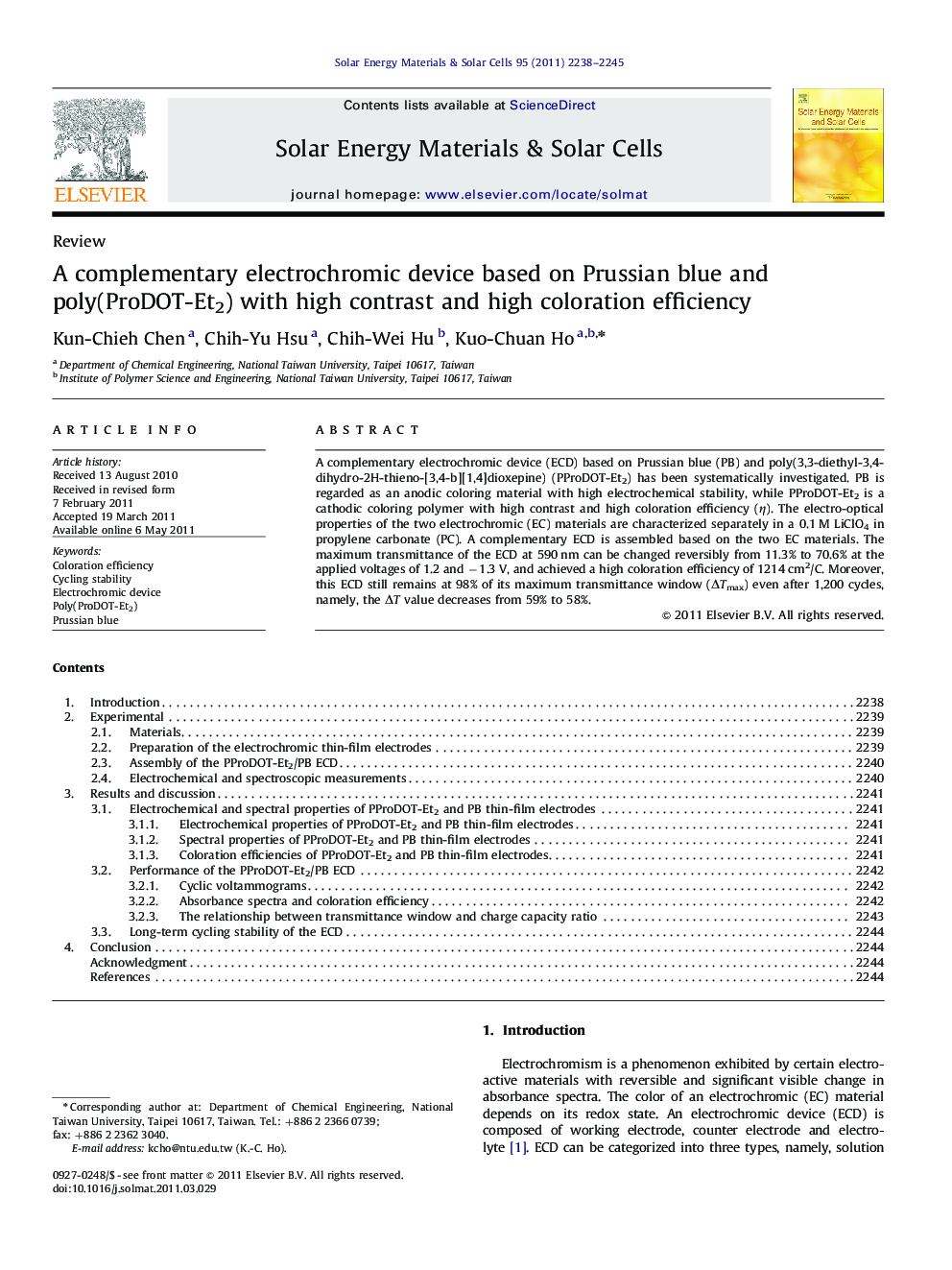| Article ID | Journal | Published Year | Pages | File Type |
|---|---|---|---|---|
| 78772 | Solar Energy Materials and Solar Cells | 2011 | 8 Pages |
A complementary electrochromic device (ECD) based on Prussian blue (PB) and poly(3,3-diethyl-3,4-dihydro-2H-thieno-[3,4-b][1,4]dioxepine) (PProDOT-Et2) has been systematically investigated. PB is regarded as an anodic coloring material with high electrochemical stability, while PProDOT-Et2 is a cathodic coloring polymer with high contrast and high coloration efficiency (η). The electro-optical properties of the two electrochromic (EC) materials are characterized separately in a 0.1 M LiClO4 in propylene carbonate (PC). A complementary ECD is assembled based on the two EC materials. The maximum transmittance of the ECD at 590 nm can be changed reversibly from 11.3% to 70.6% at the applied voltages of 1.2 and −1.3 V, and achieved a high coloration efficiency of 1214 cm2/C. Moreover, this ECD still remains at 98% of its maximum transmittance window (ΔTmax) even after 1,200 cycles, namely, the ΔT value decreases from 59% to 58%.
Graphical abstractFigure optionsDownload full-size imageDownload as PowerPoint slideHighlights► An electrochromic device based on Prussian blue and PProDOT-Et2 is studied. ► Electro-optical properties of the two electrochromic materials are characterized. ► ECD remains at 98% of its maximum transmittance window (ΔTmax) after 1200 cycles. ► Transmittance of the ECD at 590 nm can be changed reversibly from 11.3% to 70.6%.
